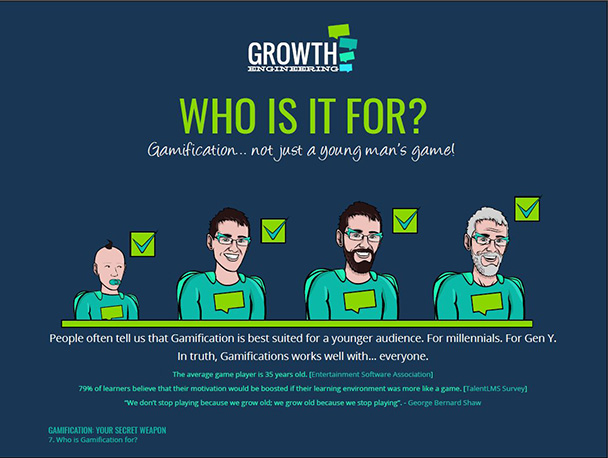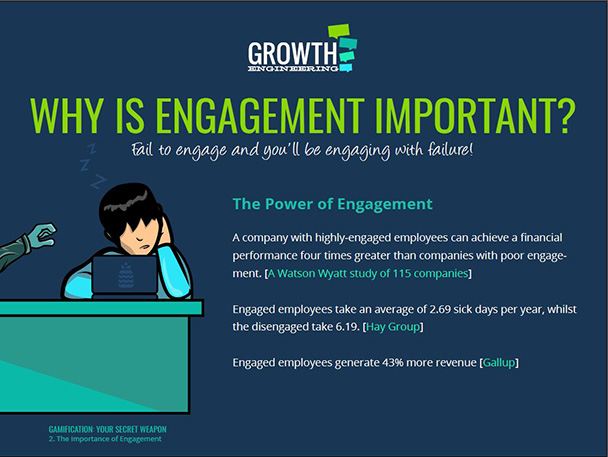Introducing gamification to your organization is a large and potentially costly undertaking. What should you know before diving in? Industry thought leaders and vendors that provide gamification solutions offer the following 10 tips for executives considering implementation of a gamification strategy.
Ten tips for CLOs considering gamification
- Start simple. “People tend to think gamification is very complex and that they have to go all in,” said Carol Leaman, CEO of Axonify, a vendor that provides gamified business solutions. “But you can start small. Pick two or three game mechanics that are easy to implement, and test out their impact.”
- Let it be casual. “Allow employees to play what they would otherwise recognize as a fun experience to clear their brain and get them in a good mood, and attach some piece of learning to that short experience,” Leaman said.
- Don’t worry about the access point. People play games when they have a few moments of downtime on whatever is most convenient—usually their smartphones. Leaman recommends embracing the use of smartphones at work because they “will make the workforce measurably smarter, which will lead to a positive business outcome.”
- Beware of biases. “A lot of folks think older people, non-Millennials, or females will not be interested in or engaged by game mechanics,” Leaman said. Yet, according to Axonify, 48 percent of people over age 50 play video games, and 44 percent of gamers are female. The UK-based Growth Engineering concurs. In a white paper, the organization notes, “Contrary to the popular belief that gamers are generally teenagers holed up in their bedrooms … only 18% of gamers are aged 18 or under. The majority (53%) of gamers are aged between 18 and 49 years old, with a fair proportion (29%) aged 50 and over.”

Figure 1: Gamification can appeal to the entire workforce (source: Growth Engineering)
- Nurture engagement. A Watson Wyatt (now Willis Towers Watson) study found that firms with highly engaged employees can achieve a financial performance four times greater than those with poor engagement, while a Hay Group report found that engaged employees generate 43 percent more revenue. In addition to the bottom line, gamification can have a positive impact on retention. “We have a new generation [that wants to be] emotionally engaged, and if you are not making that connection through your training and development programs, that talent will walk out the door,” said Juliette Denny, managing director at Growth Engineering.

Figure 2: Engagement is crucial for business success (source: Growth Engineering)
- Deliver what they want. “Learning technology solutions must be more like the things people do for pleasure at home,” Denny said. This would include entertaining and informal video delivered to employees’ mobile devices, accessible when they want to consume it.
- Mix it up. Different games appeal to different learners. A variety of options (puzzles, word, and arcade-style games) encourage players to visit a gamified platform more frequently.
- Address different personality types. Gamification thought leader Andrzej Marczewski maintains that individuals can be classified into six basic personality types, each with distinct preferences. Bear this in mind when gamifying a system.
- Gamification is not a universal solution. In a white paper, Bunchball notes that blindly adding game mechanics to sites and services does not guarantee success. It can, however, successfully add an element of community, competition, and fun that will engage users.
- Use it to stand out. According to Bunchball, gamification can be a true differentiator for your site, service, content, community, or campaign, and it can improve key metrics such as time on site, page views, and return visits. Based on your vertical, this can translate into subscriptions, customer acquisition, or products sold. It can also provide real-time, actionable data.



